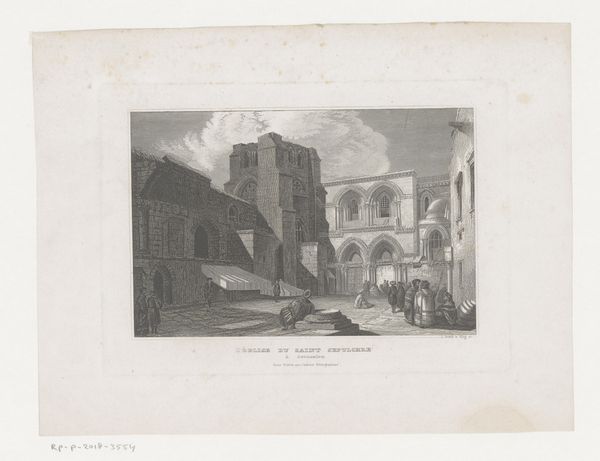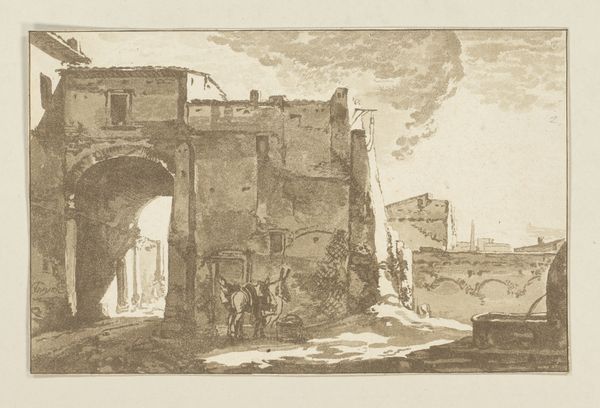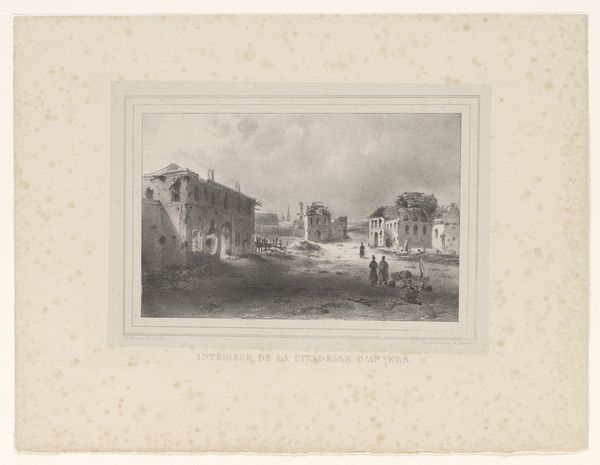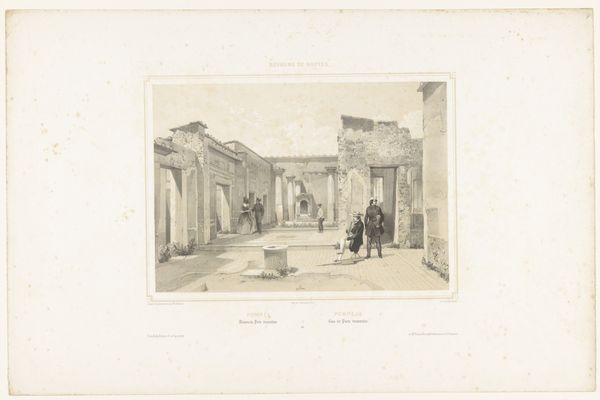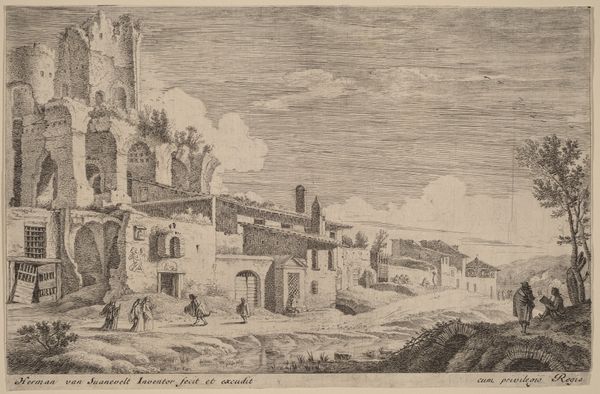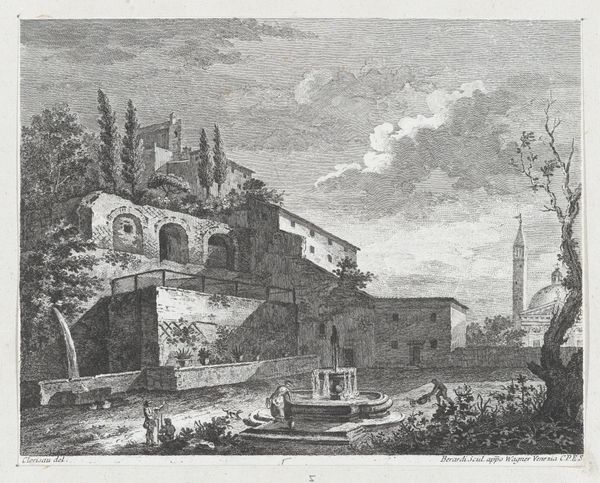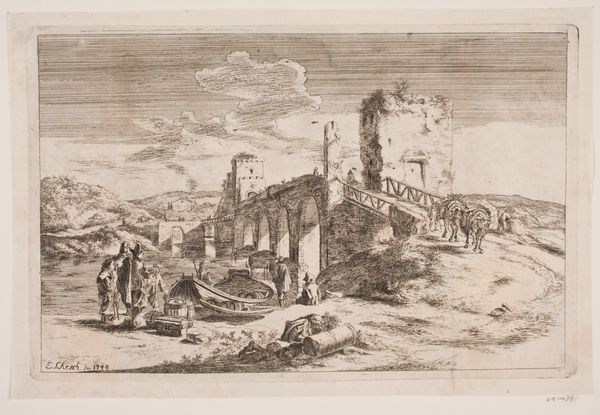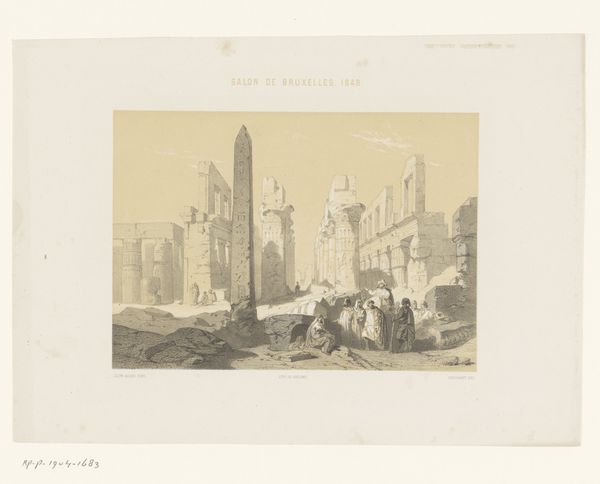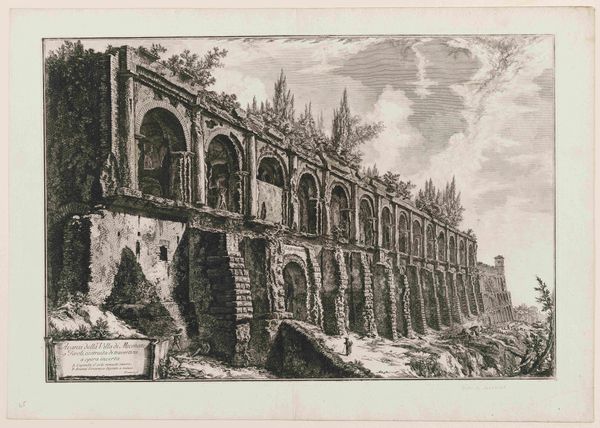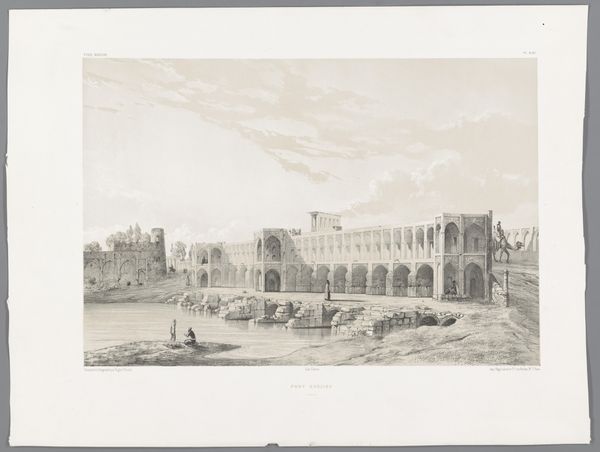
14. Mosquée el Hakem, au Kaire 1843
0:00
0:00
#
aged paper
#
toned paper
#
pale palette
# print
#
sketch book
#
personal sketchbook
#
coloured pencil
#
watercolour bleed
#
watercolour illustration
#
sketchbook art
#
watercolor
Dimensions: Sheet: 22 3/8 × 15 5/8 in. (56.9 × 39.7 cm)
Copyright: Public Domain
Joseph-Philibert Girault de Prangey made this print of the Mosque of al-Hakim in Cairo using the new technology of lithography. In the early 19th century, artists employed printmaking to document historical sites in the Middle East. De Prangey's romantic vision emphasizes the ruinous state of the mosque, with crumbling walls and fallen debris. This aesthetic of decay aligned with European colonial attitudes, which tended to portray non-Western cultures as stagnant or in decline, justifying intervention. Yet, he also shows a contemporary scene of people resting. The Mosque of al-Hakim, built in the early 11th century, stands as a symbol of Islamic architecture in Egypt. Understanding the complex history of cultural exchange and colonial power dynamics requires careful consideration. By consulting archival materials, travelogues, and historical accounts, we can gain deeper insights into the social and institutional contexts that shaped both the mosque and its representation in art.
Comments
No comments
Be the first to comment and join the conversation on the ultimate creative platform.

